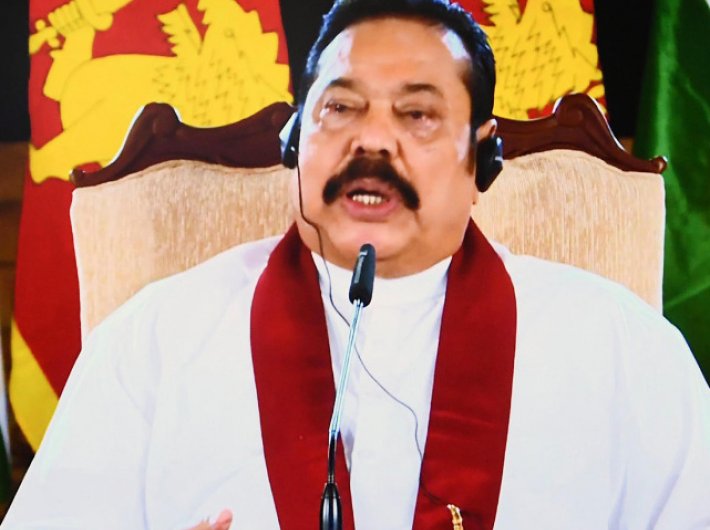Economies struggling with structural problems need to recognize and remedy patterns that can lead to imminent crisis
The Sri Lankan economy is undergoing a twin crisis: debt and foreign exchange crisis. The total current external debt for Sri Lanka stands at $45 billion. However, in February 2022, the country only had $2.31 in foreign exchange reserves. Due to low foreign exchange reserves, the country is unable to pay for essential commodities and is hence enduring shortages of food, medicine, fertilizer, and fuel, with power outages lasting for over 13 hours. While the root of the crisis is often attributed to Covid-19, we discuss how the pandemic only deepened the crisis that was already in the making for the past decade. We further elaborate on the economic lessons that India can learn from this crisis.
What went wrong?
The Sri Lankan economy is a tourism-based economy, with tourism contributing to 13% of the GDP in 2019. Due to the pandemic and subsequent international travel restrictions, the international tourist traffic declined drastically, shrinking the foreign reserves to 70% in the past two years. Other export industries like tea, garments, and spices have also witnessed a downfall due to the pandemic. However, Sri Lanka’s crippling foreign debt has been in the making for a long time. For the past decade, China has lent over $5 billion to Sri Lanka for massive infrastructure projects like building ports, a coal power plant and an airport. These projects did not produce value for the economy and yielded low returns.
Moreover, one of the sweeping agricultural reforms was to make Sri Lanka’s agriculture organic, hence the ban on the import of fertilizers in April 2021. This lowered the agriculture production to 30%. As a result, the country became more dependent on imports to sustain its population, weakening its currency against the dollar, and lowering its foreign reserves. Furthermore, Sri Lanka took a loan of $2.6 billion from the IMF. The guidelines from IMF to revive the economy stated instructions like increasing the taxes. However, the country did the exact opposite. President Gotabaya Rajapaksa had promised the people a deduction in taxes if he won the elections. Upon resuming power, he lowered the goods and services (GST) from 15% to 8% and increased the tax slab of “no tax” from Sri Lankan rupees 500,000 to 3,000,000. The percentage of people who were paying taxes in Sri Lanka went down by 33.4%. This led them to take another loan of $1.5 billion from IMF.
Does the crisis impact India?
India might have to tackle an impending refugee crisis as people, especially in North Sri Lanka, might flee to Tamil Nadu. India has also extended financial aid of about $1 billion to help the nation purchase essential supplies and is committed to supporting the people of Sri Lanka.
One of the most important lessons for India as well as other nations is that the crisis was in making for the past decade. Hence, economies that are struggling with structural problems need to recognize and remedy the patterns that can lead to an imminent crisis. No country can sustain the basic needs of its population by moving away from its primary sector like agriculture and promoting sectors heavily dependent on foreign income like tourism. Similarly, it has been noted that out of the Rs 39 crore central budget, 45% of the budget size is generated through borrowing in India (here). Hence, limiting the proportion of borrowings in the central budget should be the utmost priority.
It is also important to note that the Sri Lankan government implemented populist policies with the sole goal to win the election. While in the short term, the people were happy to save the money, it is not sustainable in the longrun. This is quite akin to India’s current political scenario where the current election wins for states like Punjab and Uttar Pradesh were based on freebies that are unviable for the long term. It would be also wise to ensure that the returns from any massive infrastructure investment in India like airports or the development of bullet trains are adequately assessed and are backed by support from the countries with whom India has genial foreign relations. Lastly, Sri Lanka has taught us the importance of diversification, especially post-pandemic and now due to the Russia-Ukraine war. Excessive dependence on tourism and tea and garments has adversely impacted the economy, and therefore, diversification of the export basket is important for India.
Sri Lanka has learnt its lesson that it is not possible to sustain high consumption without a concurrent increase in income and self-reliant production of essential commodities. Therefore, it is important to keep an eye on moving too quickly to organic farming, big projects which might not yield high returns and burgeoning debt-to-GDP ratio. Kautilya’s economics as prescribed in ‘Arthashastra’ also emphasises the importance of developing industries that can make the nation self-sufficient. India is on the right path by initiating programmes like Atmanirbhar India that encourages localized production as well as introducing production-linked incentive schemes (PLIs) for various sectors of the economy. Lessons from Sri Lanka might even equip India to present a model of sustainable consumption and self-reliant production economy, that is free from the control of international banks and corporations.
Payal Seth is a PhD Scholar, and Palakh Jain is an associate professor, at Bennett University.
